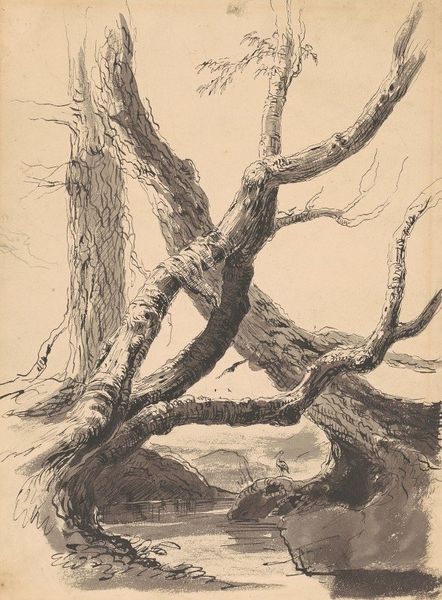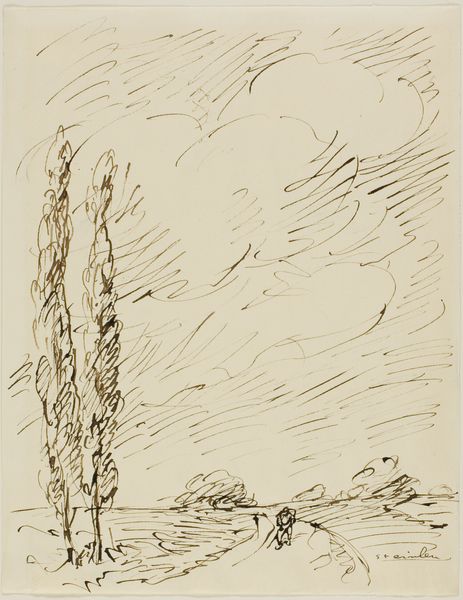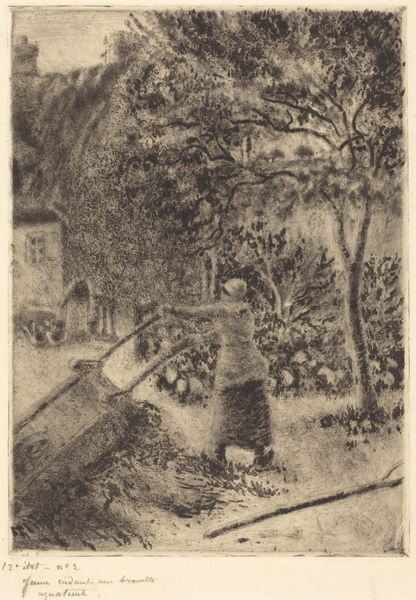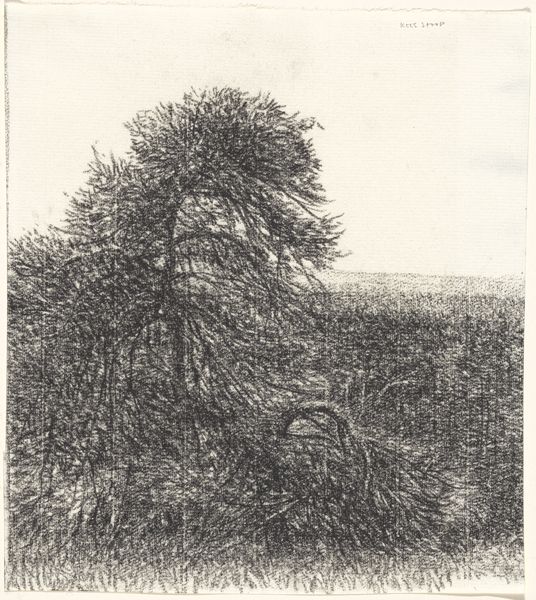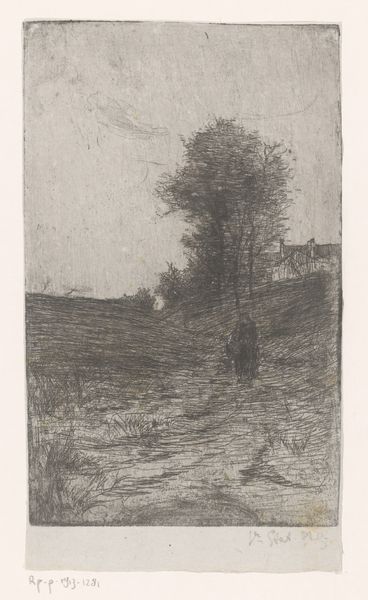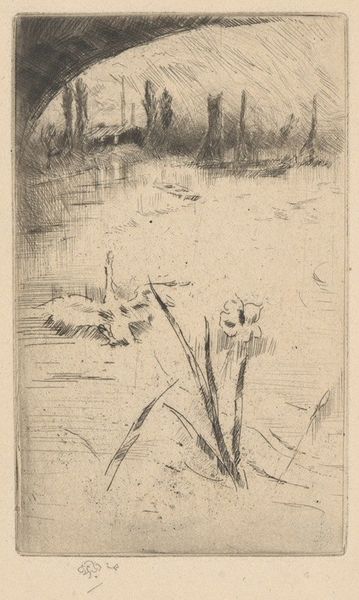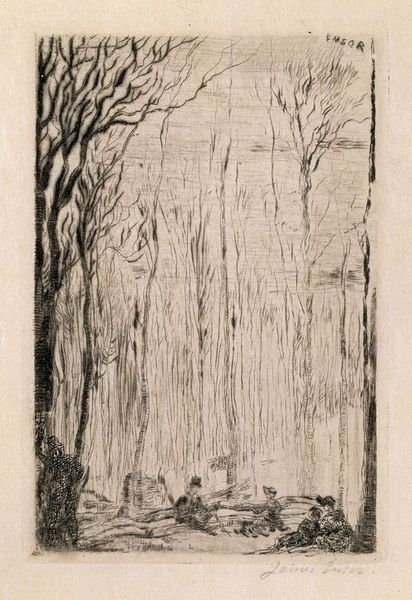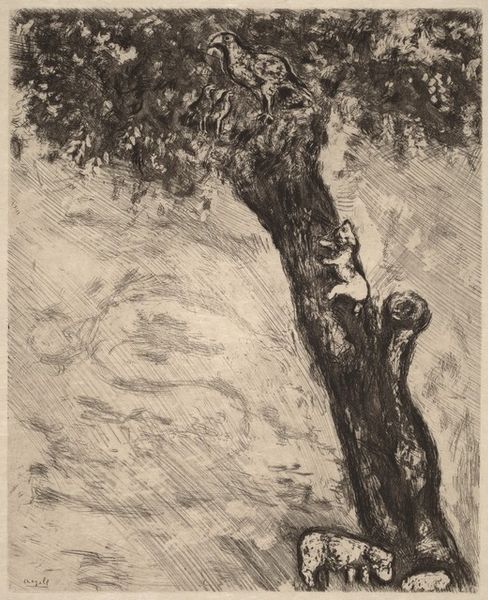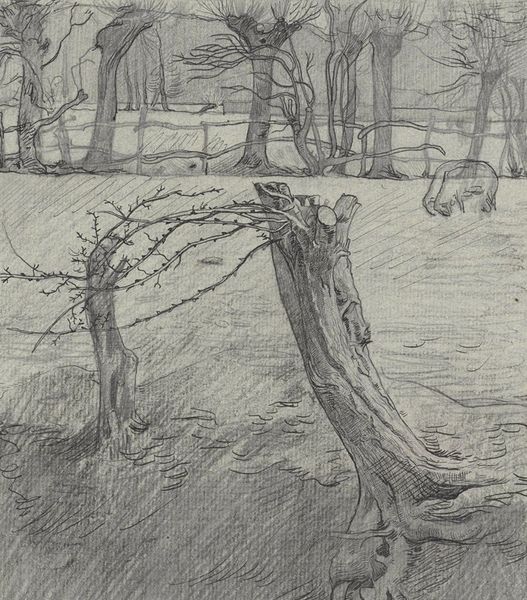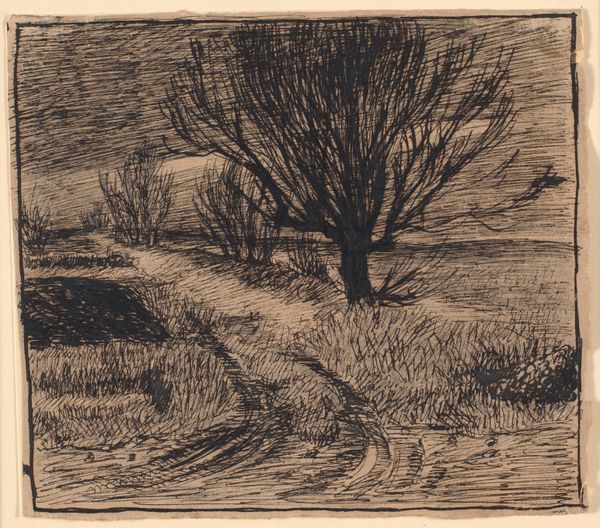
drawing, pencil
#
drawing
#
landscape
#
pencil
#
realism
Copyright: Public Domain: Artvee
Editor: Here we have Roland Holst's "Knotwilg in een weidelandschap," placing us somewhere between 1878 and 1938. It's a pencil drawing of a willow in a pasture; quite detailed and somber for such simple materials. What do you see in this piece, considering its...earthiness? Curator: The drawing presents an opportunity to examine the relationship between artistic representation, labor, and land use. Consider the specific *type* of pencil used; its hardness dictated the lines, didn't it? Was it locally sourced? And what about the paper? Its very materiality is a result of labor processes and reflects the industrial landscape in which it was created. Editor: That’s true, I hadn't considered the labor of *making* the materials. Curator: Exactly! And let's consider the tree itself. This isn’t just any tree; it’s a *pollarded* willow. That means it has been systematically pruned, its growth shaped for specific human uses - fodder, fuel, materials for basketry. Editor: So, the tree is a symbol of human interaction and manipulation? Curator: More than a symbol – evidence! Its very form is a result of repeated intervention. The "natural" landscape is anything but; it’s a produced landscape. Even those sheep are part of a larger agricultural system, are they not? Consider how the artist uses line to create value, volume, depth. What implications arise for land ownership and modes of production? Editor: So, reading the landscape through its material origins really reframes it. I assumed the artist was just observing nature! Curator: It allows us to challenge the romantic ideal of the artist as a detached observer. This is labor represented, commodified even, through the lens of landscape. Editor: That definitely offers a richer perspective than I initially had. Curator: Precisely! Considering the conditions of its production illuminates not just the drawing, but also our relationship to the environment itself.
Comments
No comments
Be the first to comment and join the conversation on the ultimate creative platform.

